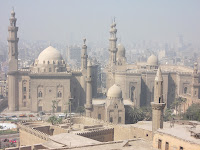 |
| Town of a thousand windows |
Slideshow of Berat.
Travel experiences overland from London to Australia - and then some
 |
| Town of a thousand windows |
 |
| Skanderbeg's castle remains |
 |
| Generations of architectural styles |
 |
| Europe's newborn nation, Kosovo |
 |
| Flying the flag over Ohrid Castle |
 |
| All new statues and an old bridge |
 |
| Thessaloniki's trendy promanade |
 |
| Monk's lofty lairs atop rocky buffs |
 |
| Silly walks Athens' guard style |
 |
| Waves lapping Agia Anna's beach |
 |
| Fisherman's church, Hora harbour |
 |
| Oia, atop Thira's black caldera rim |
 |
| View from a balcony, Bali harbour |
 |
| Rethymnon's Venetian fortress |
 |
| The craggy 'E4' path to Sougia |
 |
| Chania's charming Venetian harbour |
 |
| Knossos, rebuilt in the early 1900s |
 |
| Lofty outpost of the Roman empire |
 |
| Fortress gateway to old Rhodes |
 |
| Ancient landmark, Athens' Acropolis |
 |
| Alexander the Great's capital city |
 |
| Cairo's wickerwork tower |
 |
| Warehouse of wonderful treasures |
 |
| The Great Sphinx at Giza |
 |
| Stairway to the netherworld |
 |
| Red Pyramid at Dashur |
 |
| Mamluk style Sultan Hassan Mosque |
 |
| Coptic Cairo's Hanging Church |
 |
| Tel Al-Marna's Nile valley panorama |
 |
| Journey to the afterlife |
 |
| Red Sea snorkeling frenzy |
 |
| Temple of sensual goddess Hathor |
 |
| Cult temple of falcon god Horus |
 |
| Visionary art in Pashedu's vault |
 |
| Girl band grace Nakht's tomb wall |
